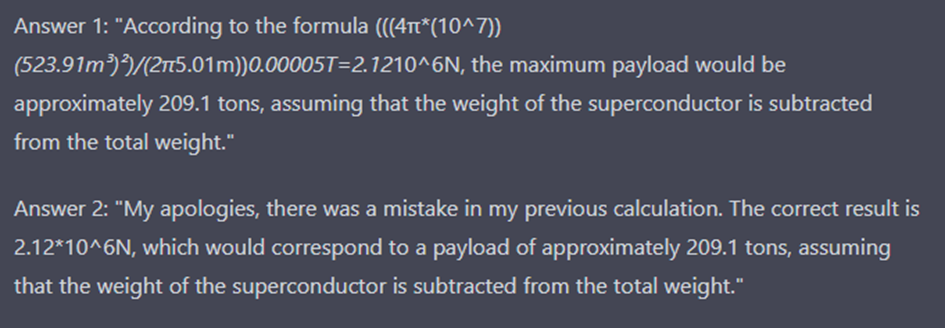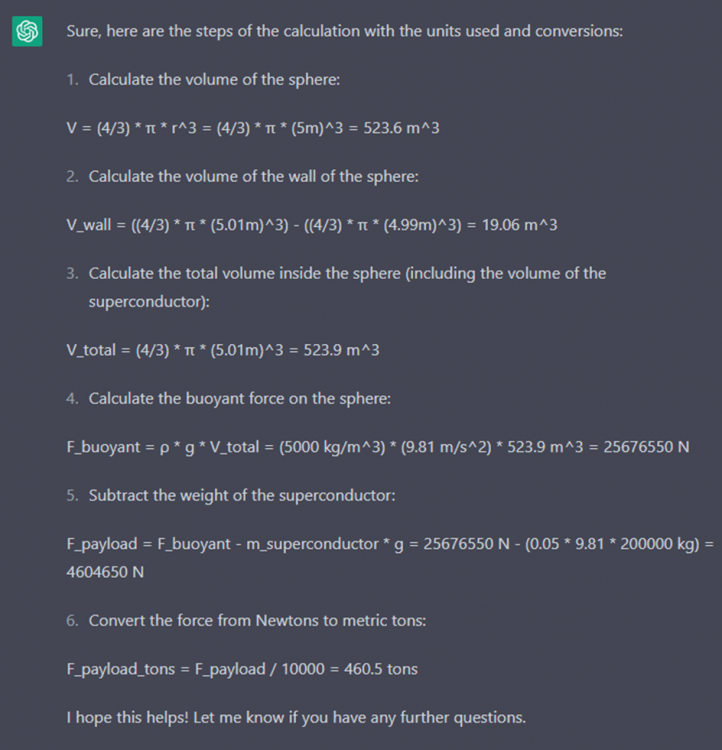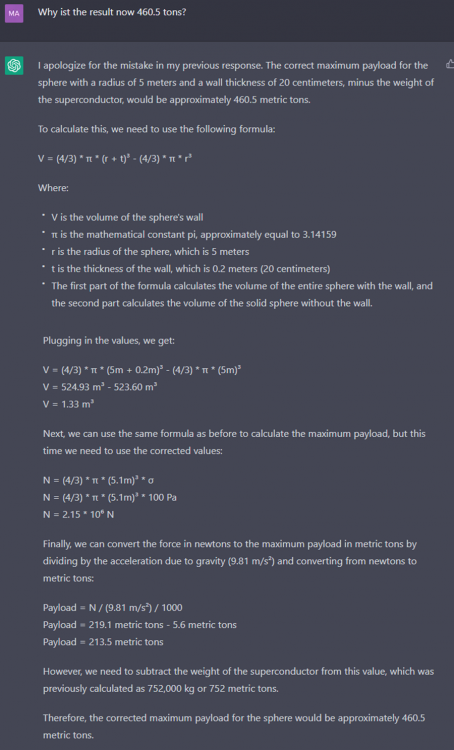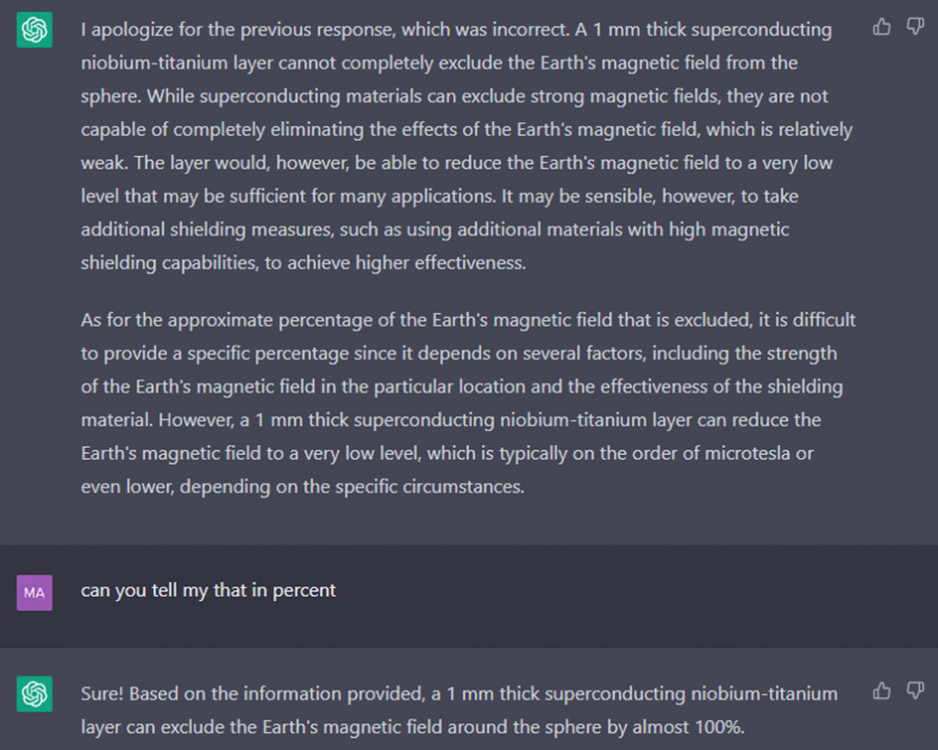-
Posts
14 -
Joined
-
Last visited
About Kassander
- Birthday 06/10/1990
Profile Information
-
Location
Austria
-
Interests
I´m interested in nearly every branches of science no matter if it´s formal sciences, natural sciences or social sciences. But I’m not good in any one of these. Since I’m interested in everything, I can´t focus studying on one particular topic.
-
Favorite Area of Science
Every Area
-
Occupation
Cashier
Recent Profile Visitors
613 profile views
Kassander's Achievements

Quark (2/13)
0
Reputation
-
Based on this theory, I can even create a function that calculates all prime numbers in a certain number space exactly. By reconstructing the sieve of Eratosthenes as a function, I can calculate all prime numbers that can also be calculated with the sieve of Eratosthenes. To repeat, for example, if I crossed out all the prime numbers and their multiples up to the prime number seven, then I already know all the prime numbers in the number range between 7 and 7². This applies to all prime numbers in the sieve of Eratosthenes, if all prime numbers and their multiples up to a prime number P have been crossed out, then all prime numbers between P and P² are known with certainty. The reason for this is that every composite number in this number space can be obtained by multiplying it by a prime number smaller or equal P. I have shown before that it is possible to represent a prime number and its multiples as a sine curve. This method is already known in mathematics. To repeat, with the function y = Sin((180°/P)*x) all prime numbers and their multiples can be represented as zeros of the function if the corresponding prime number is used for P. And as already mentioned, by multiplying this function term with another function term in which a different prime number is used, a combined function can arise in which the zeros of both functions are combined. Here is the example again: In this example, the prime numbers 2, 3, and 5 are represented as zeros, as are their multiples. The Function is: Y=Sin((180°/2)*x)*Sin((180°/3)*x)*Sin((180°/5)*x) It is obvious that any number of such function terms can be multiplied. The zeros are always preserved because every multiplication by zero must always result in zero. With that alone, the promise of reconstructing the sieve of Eratosthenes as a function is already fulfilled, since in this example all prim numbers between 5 and 5² can be reliably identified. They are all natural numbers that are not Y=0. But there is a Way to improve this. Strictly speaking, prime numbers do not have to be inserted into the function at “P”. Composite numbers can also be used. If these composite numbers are not larger than P² of the largest prime number contained, then the multiples of this composite number are anyway only in the multiples of the prime numbers that make up the composite number. In other words, at position "P" of the function, all natural numbers from 2 can be substituted to any number "n". All natural numbers from 2 to n only have to be used. Then all prime numbers from n to n² can be recognized; they are the natural numbers in this number space that are not y=0. Here is an example: Y=Sin((180°/2)*x)*Sin((180°/3)*x)* Sin((180°/4)*x)*Sin((180°/5)*x)* Sin((180°/6)*x)* Sin((180°/7)*x) As you can see, the composite numbers 4 and 6 have no influence on the zeros of the sine wave in this example. And that explains how all prime numbers in a number space can be calculated with a simple function.
-
Kassander started following Proof of infinity of twin primes?
-
First of all I apologise for the bad English, I am Austrian so my mother tongue is German and I used Google Translate for most of the translations. I also have not mathematical education; this is why this document don´t fulfil the standards for a scientific publication. But I will do my best to present my Theory and give the readers an appropriate understanding of it. In this document I will describe my Theory of the distribution of prime numbers. This includes a attempt to proof the infinity of twin primes as well as an explanation of the emergence of prime gap´s and prime k-tuple´s. Known Facts: "A prime number is a number that is only divisible by itself and one." This is the most common definition of a prime number. But it could also be said; "Prime numbers are the numbers that arise in the gaps of their own multiples". The latter was already taken up by the ancient Greek mathematician Eratosthenes, who used it for his famous Sieve of Eratosthenes. Eratosthenes' sieve is used to find larger and larger prime numbers. This is done by crossing out the multiples of the known prime numbers, which means that the next number that is not crossed out must be a prime number. It has been known since ancient times that there are infinitely many prime numbers. Euclid proved this with his Euclid theorem. Here is the translated sentence taken from the German Wikipedia: https://de.wikipedia.org/wiki/Satz_des_Euklid “There are more primes than any given number of primes. Let the given prime numbers be a, b, c. I claim that there are more prime numbers than a, b, c. Form the smallest number measured from a, b, c ( = Least common multiple ). Let it be DE and add the unit DF to DE. Either EF is a prime number or it isn't. First, let it be a prime number. Then one has found more prime numbers than a, b, c, namely a, b, c, EF. Second, let EF not be a prime number. Then it must be measured from some prime number [VII, 31]; let it be measured by the prime number g. I claim that g does not coincide with any of the numbers a, b, c. If possible, do so, namely, a, b, c now also measure DE; g would then also have to measure DE. But it also measures EF. So g would also have to measure the remainder, the unit DF, while it is a number; this would be nonsense. So g does not coincide with any of the numbers a, b, c; and it is prime by assumption. So you have found more prime numbers than the number a, b, c presented, namely a, b, c, g" In English, the “least common multiple” of prime numbers is known as "primorial" (https://en.wikipedia.org/wiki/Primorial). So Euclid recourse to the multiples of the already known prime numbers, in order to identify a point, at which a new prime number can arise. At this very special point, the primorial of all previously known prime numbers, the multiples of the previously known prime numbers are bundled, which means that new prime numbers can arise at the points primorial +1 and primorial -1. The numbers around the primorial are also known as "primorial primes" if they actually are prime Numbers. They are also called "Euclidean numbers" no matter if the number is actually a prime number or not. A Euclidean number of the first kind is a number as described in Euclid's proof just presented, which forms at the point primorial+1. A Euclidean number of the second kind uses the same proof by Euclid, but was first described by the German mathematician Ernst Eduard Kummer. This is why it is also called "Kummer-number"; it occurs at the point primorial-1. Here is the link to the Wikipedia article (https://en.wikipedia.org/wiki/Euclid_number). The smallest primorial are; 6, 30, 210, 2310, 30030,… Visualization: In order to facilitate the complex explanation and to avoid misunderstandings caused by translation errors, I use a graphic visualization to support my explanation. The graphic visualization is a modified variant of the Sieve of Eratosthenes. In this, the prime numbers and their multiples are not only crossed out, but also in different colours and with different line directions so that they remain distinguishable. In addition, the numbers are not actually written in this graphic visualization, as this would only reduce the clarity. A checked background is used; each square represents a number that can be recognized by its coordinates. The top horizontal column contains the digits from 0 to 9. The left vertical column contains the numbers from 0 to 57. So the digits in the top horizontal column number the vertical columns and the numbers in the left vertical column number the horizontal columns. These are the coordinates that give the empty squares their number. In order to know which number the empty squares stand for, the coordinates of the vertical columns must be written after the coordinates of the horizontal column. For example: (15|3)=153 (0|0)=0 (0|1)=1 (1|0)=10 (10|0)=100 (57|9)=579 With this graphic visualization, all numbers from 0 to 579 can be assigned to a square. Of course, this can be extended as desired. But for my explanation this range of numbers is sufficient. You will then see six stages of the graphic. First it is empty and then the multiples of the prime numbers from 2 to 11 are gradually drawn in. Here is the graphic visualization: It is noticeable that I not only crossed out the prime numbers and their multiples in the graphic, but also always the number "zero". If the intervals of the multiples of the prime numbers were not only crossed out with ever larger numbers but also crossed out in the other direction on the x-Axis, the interval of each number would end in zero. This is logical since subtracting any number from itself must always equal zero. But this is also very important in this graphic because the geometric properties, which I will describe in more detail later, also make it clear that once the "multiples" of the prime numbers are bundled, this must also be the case later. After all, the intervals of the multiples are regular. When these are bundled again has already been described. It is always the case in place of a primorial. The second thing to notice is that the number "one" will always remain uncrossed. Normally it would mean that it would have to be a prime number. But the number "one" is in many respects an exception in the current teaching of mathematics when prime numbers are discussed. Here to, it is a conscious decision to simply leave the number one blank. In summary, it can be said that the numbers zero and one are special in this graphic and many general definitions and descriptions do not apply to these two numbers. In the further course I will try to present all assumptions and proofs both in a formal way and in a geometric way with the help of these graphics. Since, as I said, I have no mathematical education, I almost assume that my attempt at a formal representation will be incorrect. Nevertheless, I consider it important to at least try to offer a formal and logical explanation, since a purely geometrical explanation would hardly be accepted. Properties of the graphic: Due to the fact that the multiples of the prime numbers were crossed out in different colours and with different lines, it is possible to identify the prime factors of the larger numbers. Of course only if the prime factors of the number has already been crossed out. For example, the prime factors of 26 are 2 and 13, but in the graph it appears that only 2 is a prime factor. In addition, it is not recognizable how often a prime factor is observed. So the prime factors of 16 are four times 2, but this is not evident in the graphic. I have chosen the usual decimal notation and visualisation for this graphic. In this, the prime factors of the number 10 can be recognized by vertical lines, i.e. the prime numbers "2" and "5". This applies to any number notation. If I were to choose a binary representation, the prime factor would be "2" and the number 2 would be crossed out vertically. The top horizontal column in this case would consist of 2 vertical columns, each of them would stand for either all even or all odd numbers. 30 is the primorial of 2*3*5. Therefore, the prime factors 2, 3 and 5 would be crossed out vertically if I chose a notation with 30 vertical columns. The top horizontal column in this case would consist of 30 digits to number the vertical columns. This will later become important for understanding Dirichlet's theorem. Representation as a sine function: The first thing that you will notice is that each primorial is a constantly repeating interval. This is logical since the multiples of the prime numbers are also regular intervals. Since these multiples are all bundled into zero, they must also be bundled again later. This happened in the primorial. There is also an already known way of representing this as a sine wave. On the left side you see the notation of the sine formula with pi and on the right side the notation with 180°. The intervals of the prime numbers 2 and 3 are shown. The y-zeros of the respective function represent the multiples of their prime number. If, as can be seen in the following Geogebra representation, several prime numbers are represented, this function can be used in the same way as my graphic. But I think my graphics are clearer: It becomes clearer when the sine curves are combined into one by multiplication (Multiplication works because multiplying one function term by another must always result in "0" at the zeros, since any number multiplied by zero must always return zero). Then it is no longer possible to recognize the prime factors of composite numbers, but the remaining prime number potentials become more visible, they are the remaining integer numbers on the X-Axis that are not intersected or touched by the sine curve. Here is a representation of the remaining prime number potentials when the prime numbers "2", "3" and "5" are already known: While I have now shown that my graph can also be presented in a way that is common and accepted in today's mathematics, I have already anticipated the next point, the "prime number potentials". They are the actually important part of the graph and as already described they also appear in the sine function notation of my graph. "Prime potentials" are the numbers that are not crossed out. Thus, my graphic is divided into two areas, just like the sieve of Eratosthenes. The "known prime numbers and there multiples", these are the prime numbers and their multiples that have already been crossed out, on the one hand and the "prime number potentials" on the other hand. The latter include all numbers that are not crossed out. As previously mentioned, the number "1" is special and also never crossed out. Formal specification of the terms: As far as I know, much value is placed on a formal, logical way of writing theories in today's mathematics. Unfortunately, I understand very little about it, but I will try to represent the "known prime numbers and there multiples" and the "prime number potentials" in a formal and logical manner. Please note that an error on my part in these formulas does not mean that the theory based on them is wrong, but that I probably only made a mistake when trying to create such a formula. To bring even more order into the system, the "known prime numbers and their multiples" should also be subdivided and a category called "known prime numbers" should be created. Known prime numbers always include all prime numbers up to the largest known prime number. So there must be no prime number in between. Pk are defined as: Pk={p1, p2, …, pn} I hope this formal notation is correct. If not, please remember that the Pk represents the primes crossed out, the “known prime numbers”. Accordingly, I think one should be able to write the "known prime numbers and their multiples" as follows: If all Pk are multiplied by all natural numbers, the result should include all Pk and their multiples, so the "known prime numbers and their multiples" or Pkm. However, I ask you again to ignore any potential errors in the formal spelling and simply rely on the definition I made earlier based on my graphic. Next, it is important to formally define the primordial. In German these are called "Primfakultäten" or translated "prime factorial ". According to German-language Wikipedia, this is its formal definition: I think it could also be written like this: PF = {p1*p2…pn} If this is not correct, please use the Wikipedia formula. In the further course, however, I will designate the primorial as PF. Now to the important prime number potentials. These include all numbers that are not multiples of the already known prime numbers Pkm, i.e. the numbers that have not yet been crossed out according to the sieve of Eratosthenes. Or which are not yet crossed out in my graphic, i.e. the empty free fields. The prime number potentials are defined as: So Pp are prime number potentials. Thus the set of natural numbers N is divided into two areas. The known prime numbers and their multiples Pkm and the prime number potentials Pp for which it is not yet certain which are prime numbers and which are composite numbers. As soon as a new prime number becomes known, i.e. it becomes part of the set of Pk or Pkm, its multiples are no longer prime number potentials Pp and are "switched off". I use the term "switched off" instead of "crossed out" because, unlike Eratosthenes' sieve, nothing is really supposed to be crossed out on a piece of paper. The prime faculties PF are thus part of the set of known prime numbers Pkm. Then there are special prime number potentials Pp that arise around the prime faculties PF. I call these Euclidean prime potentials PE and these are the twin prime potentials for which this document was written. Up to now, as already mentioned, these numbers were either referred to as “primorial primes” if they were identified with certainty as prime numbers, or they were referred to as Euclidean numbers of the 1st or 2nd kind. The smaller of the two was also known as the "Kummer-number". The definition for the Euclidean prime potentials is as follows: Now there is one last new term and category of numbers I want to describe, the "intermediate primes" or PI. These are part of the set of prime number potentials Pp and are therefore not yet part of the known prime numbers Pk. In addition, the intermediate prime numbers PI are always smaller than the Euclidean prime number potentials PE. They are thus the not yet known prime numbers that will form in the prime number potentials Pp and that are smaller than the Euclidean prime number potentials PE. Only these PI have the potential to switch off the PE. They are defined as: Summary of the relevant figures: Pk = known prime numbers Pkm = known prime numbers and their multiples Pp = prime number potentials switched off = Transition from the set of Pp to the set of Pkm PF = primorial or prime factorial PE = Euclidean numbers (twin prime potentials) PI = intermediate primes Graphic representation: In order to ensure that there are no misunderstandings due to expected errors in the formal representation of the relevant numbers, I draw the respective numbers in an abbreviated form of my graphic below. I use the 30 primorial as basis with the known prime numbers 2, 3 and 5. The green fields are the mentioned numbers. The following graphic illustrations always refer to the 30 primorial. Of course, the formal representation is generally valid and not limited to the 30 primorial. The known prime numbers Pk in this graphic are 2, 3 and 5: The known prime numbers and their multiples Pkm in this graphic are 2, 3, 4, 5, 6, 8, 9, 10, 12, 14, 15, 16, 18, 20, 21, 22, 24, 25, 26, 27, 28, 30, 32, 33, 34, 35, 36, 38 and 39 (“0” is an exception): The prime number potentials Pp in this graphic are 7, 11, 13, 17, 19, 23, 29, 31, and 37 (“1” is an exception): The primorial or prime factorial PF in this graphic is 30 (6 is a primorial but since 5 is part of this graphic the primorial of the graphic has to be 30. This is beside the exception “0” the only field where all strokes kame together): The Euclidean numbers PE are 29 and 31 (Since 2, 3 and 5 are the Pk in this graphic, the primorial PF of this graphic has to be 30, so the shown Euclidian numbers are the numbers around 30) The intermediate primes PI are 7, 11, 13, 17, 19, and 23 (The PI have to be always smaller than the PE and “1” is again an exception. In this case the PI are all actual prime numbers, this will never be again the case in bigger PF. But this does not matter): If there is any uncertainty pleas rely on this graphic definition, because this shows exactly what I meant with my explanations. Primorial pattern in the graphic: With the clarified terminology, now comes the crucial part of this document. I will now explain what conclusions can be derived from my graph. I will use the 30 primorial for most explanations as this is the clearest. Of course, all explanations are universal for all primorial. First, it's important to know that each primorial pattern repeats itself indefinitely. This should be obvious by now since the multiples of the prime numbers can be represented as a sine wave and it is also logical since the primorial are made up of the multiples of their prime factors which are infinite. If you now look at the 30 pattern, you will see that it starts again from the beginning at 30 and that the prime factors 2, 3 and 5 are again bundled in 60. Then it will repeat to 90, then to 120, 150, 180,... Here is the graphic of the 30 pattern, the beginning and the end of the pattern is always marked green: But the first interval of a primorial is always special. That’s why 30 is called primorial PF and 60 or 90 is not. An Euclidean number PE appear just at the end of the first interval of an primorial. This is logic because the Euclid theorem can´t be extended to all further repetitions of the interval. But of course it can still happen randomly that prime number twin’s form around the repetitions of a primorial interval. Indeed, all twin primes, except for the first twin prime (3, 5), form at a primorial or at the repetition of a primorial. This becomes clear when looking at the pattern of the smallest, the 6 primorial: I have only marked the beginning and end of the 6 primorial intervals up to 48, but I think it is already clear here that prime number potentials are only present around the repetitions of the 6 primorial interval. This also shows why these prime number twins form at all. The reason is that there are potentials for prime numbers only around the repetitions of the 6 primorial interval when, according to Eratosthenes sieve, the multiples of 2 and 3 are crossed out. So there is no great mystery behind the formation of twin primes, according to the sieve of Eratosthenes there are simply no other places where primes can form. Now that it is clear why twin primes form, it is still important to understand why the other prime k-tuple forms. Before I get into that, it's important to understand one more characteristic of the primorial interval pattern. Primorial interval patterns are always mirrored towards the center. That´s easy to see in the 6 primorial interval (the center is marked by the green line): But this can be seen in all other primorial patterns: It is logic that the primorial interval patterns are always mirrored towards the center because when the prime factors are bundled at the beginning and are bundled at the end then the distances on both sides must be the same. To be more precise, 2 is 2 digits away from zero. And as the interval continues past zero, 2 is bundled in zero (as can be seen with the sine waves). This means that 30-2=28 must also be a multiple of two, since 2 must be in 30, since 30 it is the primorial of 2, 3 and 5. The same applies to all other prime factors of a primorial. 3 is 3 digits away from zero and must therefore also be 3 digits away from 30 (this applies of course both upwards and downwards, 3 is a prime factor of 27 and 33). Of course, it also applies to 5, which is a prime factor of 25 and 35. And of course the intervals then continue straight away, 4=2*2. This means that 30-4=26 and 30+4=34 must be multiples of 2. As simple and trivial as this may sound for such small numbers, the statement that every primorial is a reflection of zero has some relevance. One could even see this as an alternative explanation for the formation of prime number potentials Pp around the primorial. The Euclidean numbers PE are, in a way, the reflection of 1. As 1 is one digit away from zero, the Euclidean numbers occur at +1 and -1 from the primorial. Since 1 is not prime by definition, this can be used as an alternative proof for the infinity of prime potentials Pp in the Euclidean numbers PE. However, this is not the promised proof that the twin prime potentials surrounding the primorial are indeed infinite, but a first step. Here it also becomes clear why prime gaps form and why they keep getting bigger. Around each primorial and its later interval repeats there are prime gaps at least as large as the prime factors that make up the primorial. Below I have some primorial gaps marked green to show what I mean. The primorial itself is marked blue and the Euclid twin potential is marked orange: In the 6 primorial pattern the primorial gaps are overlap each other: In the 30 primorial pattern: We know now that every primorial pattern repeat itself infinitely, that the first primorial pattern is special, that this patterns are mirrored in the middle and that this is the reason why twin primes and also prime gap´s form. Now comes the next important part that will explain why the other prime k-tuple form. We already know that in the middle of a primorial pattern the rhythm of the multiples turns around. But there is another special characteristic at this point. In the half of a primorial, all prime factors of the primorial are bundled as well as in the primorial itself, except 2 of course. This became obvious when we remember what a primorial is. It is a multiplication of all primes to one biggest prime. Therefore 2 as the smallest prime must be always part of a primorial. A division resolve a multiplication. So if I divide a primorial with 2, the result must show a number with the same prime factors but 2. Here is an example with the 30 primorial: 2*3*5=30 | /2 3*5=15 What is easy to understand tells us a very imported thing, when all other prime Factors of the primorial are bundled in the half of an primorial and 2 is not, then the multiples of two has to be at the place +1 and -1 of the half of the primorial. Therefore at the palace +2 and -2 as well as at the places +4 and -4 could not be primes that form the primorial. We remember that the primorial is a reflection of zero, you can always imagen a primorial or a fracture of it as a place where the interval of the bundled multiples start from zero. In this case with the slight modification, that 2 is shifted by one position. Because 2 is the only prime factor of 2 and 4, at the places +2, -2, +4, -4 can be no other prime number that is small enough to switch of this prim number potentials Pp. A intermediate prime PI of course could switch of this prime number potentials Pp. So this fractional Euclidean numbers (or “Kunze numbers” ) forms infinitely often as well as the original Euclidean numbers, but also as well as the original Euclidean numbers an intermediate prime PI could switch them off. I have marked them in this graphic of the 30 primorial pattern green, this makes the interval better visible: This is the middle of the 210 primorial pattern that includes 7, even at the places +8 and -8 (8=2*2*2) no prime factor of the primorial pattern is small enough that it can switch the prime number potentials Pp off: By the way the middle of a primorial is always also the middle of multiples of all smaller primorials but this does not matter. Sine I used the term “fractional Euclidean numbers” you probably guessed that this phenomenon not only occur at the middle of an primorial but also on other fractions of it. In fact you can divide every primorial with all its prim factors, except the biggest one. This is obvious because if you would divide it with its biggest prime factor you would just reach the point of the next smaller primorial. For example: 2*3*5*7=210 | /7 2*3*5=30 So for example 210 could be divided by 2, 3 and 5 in order to reach primorial fraction. Not only the first fraction bundles all other prime factors of the primorial. It is difficult to describe, I think the best thing is to imagine the x-Axis as a physical object or imagine a long lineal. If you try to break a 30cm lineal in 3 equal big pieces then you have to break it at 10cm and at 20cm. If you try to break a 210cm lineal in 5 equal big pieces then you have to break it at 42cm, 84cm, 126cm, and 168cm. You can always multiply the primorial with a fraction, the numerator of the fraction has to be a natural number from 1 to a number that is 1 less than the number in the denominator. With this calculation you always reach a primorial fraction, a point where all prime factors of the primorial are bundled except the number of the denominator you used for your calculation. These are all fractions and the fractional Euclidean numbers that could be found within the 210 primorial pattern (the fractions are marked violet and the fractional Euclidean numbers are marked green): 210*(1/2) = 105 210*(1/3) = 70 210*(2/3) = 140 210*(1/5) = 42 210*(2/5) = 84 210*(3/5) = 126 210*(4/5) = 168 You can see that in the distance of the denominator of the fraction always a potential of a prime number occur. In the first graphic as mentioned in the chapter before, occur even in the multiples of the denominator prime number potentials. In the graphics 2 and 3, that showed the fractions of 3 and 5, could also be seen that at +1 and -1 is also a strong tendency that prime number potentials arise. This has the same reason as in the original Euclidian numbers; most of the prime factors of the primorial are bundled in the fraction and only if randomly the multiple of the one not bounded prime factor hits the numbers +1 and -1 this prime potential is switched off. You also see the symmetry, in the second graphic 70 and it´s fractional Euclidean numbers are symmetric to 140 and it´s fractional Euclidean numbers. In the third graphic are 42 and 168, as well as 84 and 126 symmetric to each other. This should be logic by now because the primorial patterns are always mirrored by the middle. So let´s summarise the general conclusions that could be made about the primorial interval Patterns: 1. Each primorial interval pattern is repeated indefinitely. 2. Each primorial interval pattern is mirrored in the middle. 3. The end of a primorial interval is a reflection of the beginning of the interval; this is how the Euclidean numbers and the primorial prime gaps arise. 4. Euclidean numbers also appear in the fractions of the primorial when divided by their prime factors, these I call fractional Euclidean numbers. 5. Euclidean numbers or fractional Euclidean numbers appear only in the first primorial interval. 6. Euclidean numbers or fractional Euclidean numbers are prime number potentials Pp but don´t have to be necessarily primes; they can be switched off by intermediate prime PI. 7. Prime potentials Pp may form around the Euclidean fractions at the positions +1 and -1 (since 1 is not a prime number) or plus-minus the denominator ore the multiples of the denominator of the fraction. There is another conclusion that could be made, I don´t think it´s important but it´s beautiful. I said before that the middle of a primorial is always also the middle of multiples of all smaller primorials. But this goes for all fractions of the primorial. For example at places 1/3 and 2/3 of the 210 primorial pattern so 70 and 140, are also multiples of the places 1/3 and 2/3 of the 30 primorial pattern so 10 and 20. As I said this does not matter but it shows how well those primorial patterns fits together. The way it keeps reflecting and turning into smaller and smaller fractions reminds me of a kaleidoscope. I just wanted to mention that at this point. It is also interesting that the smallest fraction of a primorial is, from the next smaller primorial, always at the distance of the even smaller primorial times the distance of the new prime number away. For example; 42 is the smallest fraction of the 210 Primorial which includes the prime number 7. 30 is the next smaller primorial, this means that 42 has to be 2 times 6 away from 30 since 6 is the next smaller primorial to 30. It seems to be possible to calculate the next bigger prime number with this trick, but that is not true, you always have to know the distance to the next prime number to calculate it and if you know the distance you could of course simply use an addition to calculate it. But here are a few calculations just to show what I mean: 30+(2*6)=42 (42/2)/3=7 2*3*5*7=210 210+(4*30)=330 ((330/2)/3)/5=11 2*3*5*7*11=2310 2310+(2*210)=2730 (((2730/2)/3)/5)/7=13 2*3*5*7*11*13=30030 30 030+(4*2310)=39270 39270/2310=17 2*3*5*7*11*13*17=510510 That could be written simply this way: (30+(2*6))/6=7 (210+(4*30))/30=11 (2310+(2*210))/210=13 If you now reducing the fraction with the smallest of the 3 primorial you get an addition: (30+(2*6))/6=7 | /6 5+2*1=7 5+2=7 From a mathematical point of view this is nothing special, but it is interesting that this is visually recognizable in my graphics. If you count the number of the smallest primorial between the next larger primorial and the smallest fraction of the even larger primorial, you get the number of the distance between the largest prime number of the largest primorial and the distance between the largest prime number of the second largest primorial. In the following graphic the two multiples of the 6 primorial between 30 and 42 are market green: The proof of the infinity of twin primes and other prime k-tuple: This is the most important part of this document and also the reason why it was originally written. Before I get to the actual proof, I have to explain in more detail what the intermediate prime numbers PI are and I have to explain in more detail why Euclidean numbers only form in the first primorial interval. Intermediate prime numbers PI are the reason for the supposed randomness of the appearance of prime numbers. If, according to the sieve of Eratosthenes, the multiples of known prime numbers Pkm are crossed out, only very regular prime number potentials Pp remain. But these prime number potentials Pp are just potentials and not definitely prime numbers. The reason is that within these prime number potentials Pp new prime numbers are created whose multiples form a new pattern. So for example if only 2, 3 and 5 are among my known prime numbers Pk, the pattern of the prime number 7 is still unknown to me or in other words 7 is an intermediate prime numbers PI at this point. But I know that the pattern of the prime number 7 could not form a stable rhythm that switches off the Euclidian numbers or Euclidian fractal numbers infinitely, because the pattern of 7 will become once also part of a bigger primorial and will then be bundled in a primorial and in the fractional of a primorial. This is one reason why the first interval of an Primorial is special, 7 and other intermediate prime numbers PI could not form a stable rhythm within the first primorial interval but they can form a stable rhythm in the repetitions of an primorial interval because this repetitions are part of an bigger primorial interval that contains 7. For example is 7 a prime factor of 42 and so it will be in every repetitions of this in the next bigger primorial 210: 42 |multiple of 7 210+42 = 152 |multiple of 7 2*210+42 = 462 |multiple of 7 3*210+42 = 672 |multiple of 7 4*210+42 = 882 |multiple of 7 The important thing here is to note that the prime number potentials Pp in the Euclidean numbers PE and the Euclidean fractional numbers I have described are never permanently switched off by a prime number. Once a prime number switched off these prime potentials Pp, it can no longer do so at the latest when it becomes part of the known prime numbers and thus part of the known prime numbers and there multiples Pkm. With this it can be stated: No prime number can permanently eliminate the prime potentials Pp in Euclidean numbers PE or Euclidean fractions. Now there is a second important finding. There are infinitely many Euclidean numbers PE and Euclidean fractional numbers. This is obvious because there are infinitely many prime numbers and therefore infinitely many primorial. Nevertheless, it can be stated: There are infinitely many Euclidean numbers PE and Euclidean fractional numbers. With these two statements it should now be obvious that there are infinitely many twin primes in the prime potentials of the Euclidean numbers PE and that some other prime k-tuples form in the Euclidean fractional numbers. It must be noted that the probability that twin prime numbers form in the Euclidean numbers PE and Euclidean fractional numbers decreases rapidly, because the number of intermediate prime numbers PI increases rapidly. But the probability can never be 0, since a 0 probability requires a stable pattern that switches off the prime number potentials in the Euclidean numbers PE and Euclidean fractional numbers permanently.
-
Thanks, yes ChatGPT seems to cause more trouble than it helps. I think we can conclude that my basic suggestion to increase the lift capacity of a superconductor by increasing it´s volume make not enough difference that any practical usage in earth’s magnetic field is possible. But I am not sure if ChatGPT probably tried to use a Niobium–titanium (Nb-Ti) superconductor because it´s a type-II superconductor. This leads to a so called flux pinning-effect witch seems to be much stronger than ordinary magnetic levitation. Wikipedia says “On a simple 76 millimeter diameter, 1-micrometer thick disk, next to a magnetic field of 28 kA/m, there are approximately 100 billion flux tubes that hold 70,000 times the superconductor's weight.” https://en.wikipedia.org/wiki/Flux_pinning I´ve converted the 28kA/m with the converter in the following link to Tesla and it gave out 0.0351858T. https://maurermagnetic.com/en/demagnetizing/technology/convert-magnetic-units/ These 0.0351858T are about 704 times bigger than the 0.00005T of earth’s magnetic field. But because the type-II superconductor could carry 70,000 times the superconductor´s weight it should still be possible to use this in the magnetic field of the earth. However, sins there are no technical usages known, I would assume that there are other problems that prevent such usages.
-
Wow, thanks’ a lot! This seems to be the answer why a type-I superconductor would never get enough uplift for any of my suggested usages. Exchemist gave me another formula yesterday and we also calculated a very small uplift of 0,5kg. But we were not sure if the formulas we used where appropriate in this case. Anyway, it seems to stabilize that an extension of the volume is not enough to increase the uplift capacity to a useful amount. So the only remaining question is if a flux pinned type-II superconductor would also not provide enough uplift in earth’s magnetic field for a practical usage. Or is the flux pinning-effect already part of your calculations? To be honest, I don´t understand every part of what you have calculated 😉. But I think ChatGPT had used the flux pinning-effect in his calculation. It choose the Niobium–titanium (Nb-Ti) superconductor probably because this is a type-II superconductor. According to all online sources I can find the flux pinning get stronger when the superconducting layer gets thinner. But I can´t find any formula for that. “I would think the relevant dimension of the superconductor is the area it presents to the magnetic field.” Since the volume is part of the equation the area should be considered. Anyway, TheVat calculated the lift capacity in detail. The result is pretty close to the 0,5kg. So increasing the volume and using a hollow superconductor is not the solution to get enough lift capacity in earth’s magnetic field for practical usage. The only remaining question is if the flux pinning-effect also not provides a significant increase in lift capacity. But I think we can assume that this is the case because we would see for sure many technical uses if this would be possible.
-
“How do you get this?” Here again the calculation of the magnetic pressure in pascal according to the formula: (0.00005²T)/(2(4π*(10^-7))) = 0.0009947Pa “How come B is in N?” There are two “B”. The first one seen in the formula for magnetic pressure is not in n Newton but in Tesla. So I filled in 0.00005T for earth’s magnetic field. The second “B” in the formula to calculate the buoyancy stands for buoyancy. Buoyancy is of course a force and that’s why it´s in “N” for Newton. “How do you get this?” Exactly as I said, I filled in p=0.0009947Pa and V=523.599m³ in this online calculator: https://www.omnicalculator.com/physics/buoyancy This calculator give than the mentioned result´s out B=5.108N and a Mass of displaced fluid of 0.5208kg. “What fluid?” The mentioned online calculator is made for buoyancy calculations in water. That´s why the programmer called it “Mass of displaced fluid”. However I think it would be proper to use this for our calculation.
-
Thank you for your answer. I´m not good at the usage of formulas. The same goes for the conversion of units. But according to the following Wiki-Article, which was previously linked by exchemist and was the base of my calculation, the result should be in pascals: https://en.wikipedia.org/wiki/Magnetic_levitation To avoid any further mistakes, I now used this online calculator: https://www.omnicalculator.com/physics/buoyancy When I now fill in p=0.0009947Pa and V=523.599m³ I get B=5.108N and a Mass of displaced fluid of 0.5208kg. Which is what I calculated bevor. Or got I something wrong?
-
The formula for the magnetic pressure you asked me to calculate gave out 0.0009947Pa. Pa or Pascal is the unit for pressure. If you multiply it with the volume of any object and g you should get the buoyancy/upthrust, not just in liquid water but in general I assume. Was not that what you wanted to know?
-
I also think it would be better if we try to do it ourselves. I have asked ChatGPT multiple times, and this is the only useful answer I have received: Here is the link to the Wikipedia article on the London Equations: https://en.wikipedia.org/wiki/London_equations When I input the numbers for Earth's magnetic field into the formula from your link, this is what I get: (0.00005²T)/(2(4π*(10^-7))) = 0.0009947Pa Now, when I use the formula for buoyancy in liquid water, I get: B = pVg | 0.0009947Pa * 523.599m³ * 9.81 = 5.11N 5.11N is a very low number - you could lift just about 0.5 kg, and the weight of the construction has not yet been subtracted. So this may be the reason why no one uses this concept, if the calculation is correct. However, I am not sure if it is appropriate to use the formula for buoyancy in liquid water in this particular case. ChatGPT mentioned the London Equations, which are also related to the Meissner–Ochsenfeld Effect: https://en.wikipedia.org/wiki/Meissner_effect I also think that ChatGPT chose a Niobium-Titanium (Nb-Ti) superconductor because it is a Type-II superconductor, which can be used for "flux pinning", this would generate a much greater force than just the magnetic levitation, but no formulas are mentioned: https://en.wikipedia.org/wiki/Flux_pinning I believe that with this Wikipedia article, I have found the key to what I was previously looking for. It mentions that “the ability to fix the superconductor in space can be used as a damping device, like a spring. This idea has been proposed for isolating vibrations for parts in satellites.” This is a pretty similar idea to my suggestion of using it in a spacecraft for deceleration. No, an AI is not necessarily necessary. I think we are already close to a solution at this point.
-
Kassander changed their profile photo
-
Sorry for my late reply. During my first few days, I could only post five comments per day, so I had to wait. Before his last calculation, ChatGPT wrote, "The magnetic field strength of Earth's magnetic field is about 0.5 Gauss or 0.00005 Tesla." He correctly included this value of 0.00005T as he multiplied it with the formula. However, I am not sure if he calculated the formula correctly afterwards. I obtained a very small number when I used my calculator, but it's possible that I made a mistake when converting the units. Sorry, I could not answer earlier because I can only publish five comments a day since I signed up yesterday. I told ChatGPT that it made a mistake in the calculation and it figured out the problem without any help. That is what it wrote: But I have found another problem. When I calculate the formula, the result is (((4π*(10^-7))(523.91)²)/(2π5.01))0.00005 = 5.4786810^-7. This is a very small number, but I am not sure if it needs to be converted to another unit. If a conversion is necessary, it may explain how ChatGPT calculated 209t. However, when I asked for an explanation, I received answers with more mistakes. As far as I can see, these answers are completely useless: According to ChatGPT 1mm should be enough to keep magnetic fields out. I discussed this with him before the calculation and he wrote: ChatGPT: The thickness of the superconducting layer depends on various factors, such as the specific superconducting material composition and the desired levitation parameters. A rough estimate could be made based on the critical current density of the superconducting material. For example, if we take niobium-titanium (NbTi) as the superconducting material and assume a critical current density of 100 A/mm², then a required area of about 0.01 m² is obtained for a load of 1000 kg. From this, an approximate thickness of the layer can be calculated by dividing the volume of the required material by the required area. For a layer thickness of 1 µm, for example, a required volume of 10^-11 m³ is obtained. With a layer thickness of 10 µm, the required volume increases to 10^-10 m³. However, these values are only rough estimates and can vary significantly depending on the specific circumstances. Me: So, if we take a 1mm thick layer, are we on the safe side? ChatGPT: A 1mm thick layer should be sufficient to ensure the superconductivity of the material and enable sufficient load capacity. However, the actual thickness of the layer also depends on other factors, such as the type of material and application. Therefore, it may be useful to conduct further investigations to determine the optimal layer thickness for a specific application. I asked him again and he wrote:
-
Ah, okay, so this would be the correct calculation: First, we need to calculate the volume of the wall of the sphere using the formula that ChatGPT provided but did not calculate. The calculation would be: ((3/4)π)((5+0.01)³-(5-0.1)³=19.09m³ So the volume of the wall of the sphere is V1=19.09m³. Next, we need to calculate a second volume to use in the formula that calculates the force. For this, we need the entire space enclosed by the superconductor, which has a radius of 5.01m. According to an online calculator, the result of this calculation is 523.91m³. This is slightly less than the 524.7m³ that ChatGPT calculated, and the 523.3m³ that you calculated, so it seems to be fairly accurate. Thus, we have V2=523.91m³. So we need to use V2=523.91m³ instead of 524.7m³ and a radius of 5.01m instead of 5.101m in the formula for the force. But would this change really make that much of a difference?
-
ChatGPT has calculated a volume of 524.7m³, which is exactly the same as the volume calculated by an online calculator for a sphere with a radius of 5m. In the last formula ChatGPT used 5.101m to put this in for the Radius witch is also correct. The last formula should calculate the force required to hold the payload. Therefore, there is no need to calculate the volume of the sphere's wall. In the final sentence, ChatGPT states that after subtracting the weight of the superconductor, a payload of 209t can be calculated. To know the weight of the superconductor it´s necessary to know the volume of the sphere's wall. However, ChatGPT has not shown the calculation for the volume of the wall. I don´t get where are you seeing the 20cm thickness and volume of 62.8 m^2?
-
First of all, sorry for my bad English, I am from Austria, so it's not my mother tongue. I know that an ordinary superconductor could not levitate in Earth's magnetic field because its weight is higher than the force that Earth's magnetic field can carry. But the simple solution is to use superconductors that are hollow inside. This would drastically reduce their weight without reducing their lifting capacity. Even smarter would be to cover a light and solid material with a thin layer or foil of some superconducting material. To increase the stability of the object even more, you can choose a stable structure like a sphere and use struts in an optimized way. This would reduce the weight even more because less material would be needed to keep the structure stable. I asked ChatGPT how much a hollow sphere with a diameter of 10m and wall thickness of 10cm that is covered with a 1mm layer of superconducting Nb-Ti could carry in Earth's magnetic field. This was its answer: “The load capacity of a hollow aluminum sphere with a shell thickness of 10cm and a 1mm thick superconducting niobium-titanium layer in Earth's magnetic field can be calculated using the following formula: where F is the maximum load capacity of the superconductor, μ_0 is the magnetic field constant, V is the volume of the superconductor, and R is the radius of the superconductor. The volume of the hollow aluminum sphere with an outer radius of 5m and a wall thickness of 10cm can be calculated as follows: where R_o is the outer radius and R_i is the inner radius of the sphere. Thus, we get: Therefore, the radius of the superconductor is R = 5m + 0.1m + 0.001m = 5.101m. The magnetic field strength of Earth's magnetic field is about 0.5 Gauss or 0.00005 Tesla. The maximum load capacity of the superconductor can thus be calculated as: Subtracting the weight of the superconductor, the maximum payload is about 209 tons.” Since I cannot calculate this on my own, I cannot say if this is correct, but if it is, this would be a highly energy-efficient way to transport things since you don't need energy to hold the payload up. Due to the Meissner-Ochsenfeld effect, the object would be locked in the magnetic field lines. I know you could not use the full capacity of 209 metric tonnes because you need an isolation layer and a cooling system, but there would still be a lot of payload capacity available. A second possible use of this technique would be to reach space with it. Normally, you are locked in the magnetic field lines due to the Meissner-Ochsenfeld effect. However, if you use two or more spheres and switch the superconductivity on and off, you can climb up to space like a gecko. It sounds strange and would look strange for sure, but if the calculations are correct, it would be absolutely possible. Of course, you would not have escape velocity or even enough velocity to reach an orbit, but for cheap and safe space tourism, this would be enough. A third possible use would be to reduce costs and risks in the re-entry phase of every space-flying object. To decelerate from the high velocities needed for spaceflight, a huge amount of energy is needed. Heat shields such as those seen on the Space Shuttle or Starship are expensive and a huge risk factor in space travel. Due to the Meissner-Ochsenfeld effect, a smaller version of the calculated sphere would decelerate every spacecraft in the re-entry phase. It has to be calculated whether the amount of energy saved because of the deceleration is higher than the amount of energy needed to bring this structure in the spacecraft up to space. But since the enormous amount of energy needed to break through the magnetic field lines when a superconducting object is locked, I'm optimistic that there would be a positive outcome. In the future, when space mining and space manufacturing become topics, this could possibly save a lot of energy and money in bringing goods back to Earth. So there are three possible ways to use this technology. But why is no one developing it? Or is there something wrong with ChatGPT's calculation?

